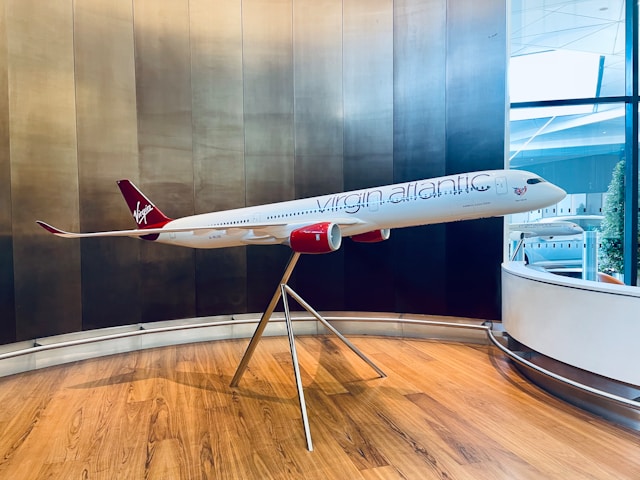Points and Miles Assumptions: 5 Common Myths Debunked
Using points and miles to make travel more affordable, or even free, can feel like discovering a secret code. But for many people, Points and Miles Assumptions about earning and redeeming rewards can stop them from ever trying. Maybe you think it’s only for frequent flyers or that it takes a ton of spending to get started. The truth? Points and miles are a lot more accessible than most people realize. Let’s discuss five common Points and Miles Assumptions and show you what’s really possible when you learn how to make rewards work for you.
Assumption #1: You Have to Spend a Lot of Money to Earn Enough Points
WRONG. (Unfortunately, this is one of the most common Points and Miles Assumptions that stops people from ever looking further).
Reality: It’s not about what you have, but how you use it. Here’s how everyday people earn lots of points without breaking the bank:
- Welcome Offers (Sign-Up Bonuses):
Many credit cards offer sign-up bonuses, giving you thousands of points if you meet a spending requirement within a set timeframe (Welcome offers range from 20,000 pts for spending $500 in 3 months to 150,000+ points for spending $20,000 in 3-6 months and everything in between.)- Lower spending thresholds often come with no annual fees, while premium cards with higher thresholds unlock more benefits and points.
- Essential Tip: Use your card for regular expenses like groceries, bills, and gas to meet the spend without unnecessary purchases.
- Category Bonuses:
Some cards offer extra points on specific spending categories like dining, groceries, or travel. For example, a card might offer 3 points per dollar on dining and 1 point per dollar elsewhere. - Referral Bonuses:
Many cards reward you with bonus points when someone you refer (like a friend or family member) gets approved. Referral bonuses can range from 10,000 to 20,000 points per person! - Milestone Bonuses:
Some cards award bonus points on your account anniversary or when you hit specific spending milestones. - Shopping Portals:
Online shopping portals (like Rakuten, airline portals, or hotel portals) allow you to earn points or cashback when purchasing from popular retailers. Simply access the retailer through the portal, shop as usual, and earn rewards!
Assumption #2: All Points and Miles Are Worth the Same
WRONG.
Reality: The value of your points depends on how you redeem them. Not all points are created equal, and understanding their worth is the key to maximizing your rewards.
- Booking through a credit card’s travel portal often gives you a fixed value (e.g., 1.5 cents per point).
- Transferring points to airline or hotel loyalty programs can unlock much greater value—often 2-3 cents per point or more!
Miles Mastery: Learn which programs give you the best bang for your buck when transferring points.
Assumption #3: You Have to Be Loyal to One Airline or Hotel Program
WRONG.
Reality: Transferable points are a true game-changer. You don’t need to commit to one airline or hotel brand to enjoy incredible rewards. Do you value status with a hotel or airline? There are ways to get status without large amounts of business with that brand.
- What Are Transferable Points?
Points earned through major banks like Chase, American Express, Citi, and Capital One can be transferred to multiple airline and hotel partners. This means flexibility in how you redeem points based on your travel needs.
Why It’s Valuable:
Transferable points let you choose the best deal for each trip. For example, you could transfer points to one airline for a domestic flight and to a hotel chain for an international vacation. In addition to flexibility, transferring points often gets you more value for each of your points.
Assumption #4: Reward Travel Is Difficult and Complicated
Eh, a Little Right and a Little Wrong.
Reality: Basic Points and Miles strategy is straightforward and accessible for most people.
- If you have a decent credit score and can pay off your credit card balances monthly, you’re already on the way.
- Booking discounted or free flights and hotels is often easier than you think and there is ample information to help guide you through simple redemptions.
Where it gets tricky is optimizing for maximum value (e.g., finding “sweet spots” in award charts or piecing together complex itineraries). Start with simple redemptions and build your knowledge over time.
Assumption #5: There’s Only One Right Way to Use Points
DEAD WRONG.
Reality: There’s not a single roadmap to earning and redeeming points and miles for free or less expensive travel. There are several roadmaps, and many still to be written! It all depends on your travel style and goals.
Here are some questions to consider:
- Do you travel more internationally or domestically?
- Do you prefer economy seats or luxurious lie-flat beds in business class?
- Would you rather save on flights or splurge on hotels?
- Do you travel solo or with family?
- Do you want to juggle multiple cards for maximum rewards or keep it simple with one card?
No matter how you answered any of these questions, there’s a way to earn and redeem points to fit your needs. There are principles that rewards travelers follow that work well to help accumulate points, but the different ways points are earned and redeemed are endless. Learn from others that have been successful before you.
Bonus Misconception: Points and Miles Are Fraudulent or a Scam
WRONG.
Reality: Take it from a former Certified Fraud Examiner and Compliance Officer, this couldn’t be further from the truth. While some people might misuse legit systems for fraudulent purposes, points and miles programs themselves are not scams. These are fully legal and transparent loyalty rewards systems created by banks, airlines, and hotels to encourage spending and customer loyalty. Every day, people successfully use these programs to earn and redeem points for travel experiences.
Why Points and Miles Aren’t a Scam
1. Established Programs
Points and miles programs are backed by some of the most reputable institutions in the world, including major banks like Chase, American Express, Citi, Capital One and Wells Fargo, as well as globally recognized airlines and hotel chains. These programs have been around for decades, operating with consumer protections and clear terms.
2. Transparent Terms
The terms and conditions for both earning and redeeming points are explicitly outlined by every program. However, some redemption options, often less valuable ones, tend to get more marketing focus. For example, banks may heavily promote using points through their travel portals at a fixed value or earning free nights through hotel stays. Why? Because these options benefit the program more than the user.
What’s not advertised as heavily is the potential for outsized value for the user. You can earn points across multiple cards within the same bank’s ecosystem, pool them together, and transfer them to airline or hotel partners for significantly better redemptions. The ability to transfer points is typically buried in the terms and conditions, but it’s there, and it’s the key to unlocking so much value.
3. Everyday Success Stories
This isn’t just for insiders or industry experts. Regular people are using points and miles to reduce travel costs without changing their spending habits. By shifting everyday expenses to the right credit cards—and paying them off responsibly—travelers can stick to their budgets while unlocking incredible opportunities.
Points and miles programs aren’t a scam—they are a powerful tool for those willing to understand and use them strategically. With a bit of knowledge, you can turn everyday purchases into extraordinary travel experiences!
Don’t let Points and Miles Assumptions keep you from exploring the possibilities. Want an example? Read my posts about trips I’ve taken using Points and Miles, including:
https://journeycurrencies.com/a-bucket-list-16-day-italy-itinerary







